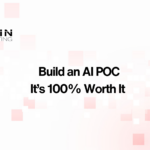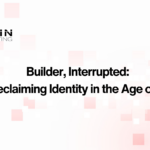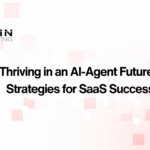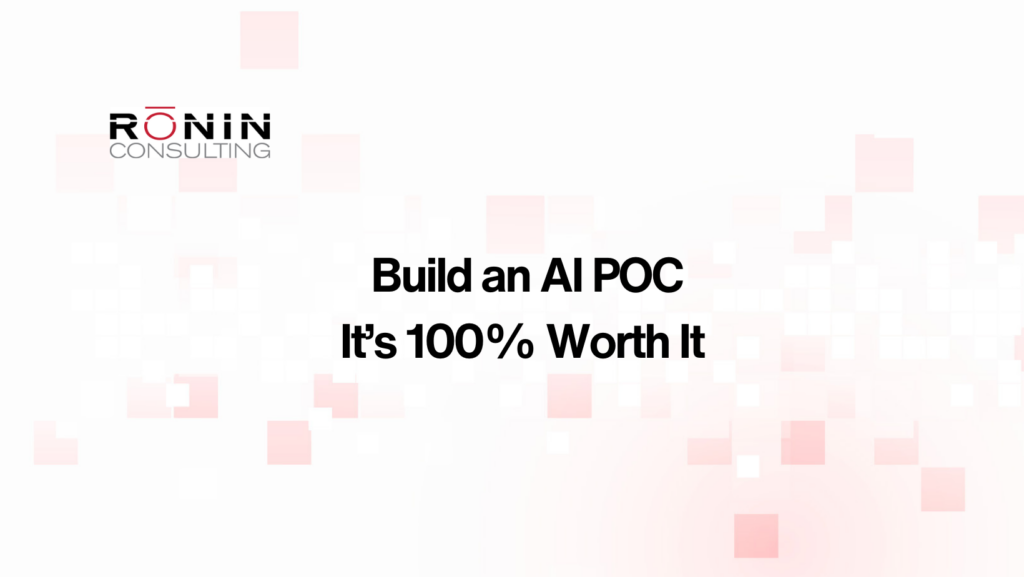
Jumping straight into full-scale AI implementation without a Proof of Concept (POC) is one of the fastest ways to burn money, time, and trust. AI is powerful, but it’s not magic.
You should not rush into an AI initiative. A successful AI initiative requires rigorous planning, strategic alignment, and validation against real-world data and objectives.
That’s where an AI POC comes in.
If you’re serious about AI, consider starting with a POC. If you’re not convinced, keep reading, and by the end of this article – you will be!
AI promises significant gains but also big risks
Most executives today know the incredible potential AI can have on their business. They understand that AI drives enormous positive and disruptive change and are eager to harness it. However, the gap between ambition and execution is real.
AI is not a plug-and-play solution. Models need training. Data needs cleaning. Integration paths need engineering. More importantly, the problems businesses want AI to solve must be clearly understood, validated, and scoped correctly.
A POC is the perfect solution to help bridge the gap between ambition and execution. Starting your AI journey with a POC allows your team to:
- Expose gaps in infrastructure or data quality
- Align around realistic outcomes
- Measure performance against business-specific KPIs
- Validate feasibility before you commit resources
Assess the problem carefully before launching an AI project.
Confirm that AI is the right tool for the job, that you have access to the right data, and that the expected outcomes are achievable. Conducting a feasibility check upfront protects your team from wasting time and money. It also saves you from losing momentum on the wrong solution. Make informed decisions before you commit valuable resources.
Expose gaps in infrastructure or data quality.
Dig into your data and systems before you build. AI needs clean, consistent, and accessible data to deliver results. When you evaluate your infrastructure, you could quickly uncover weak points. From missing data to disconnected systems, these findings could potentially delay your project. Address gaps early to give your AI efforts the foundation they need to succeed.
Align internal teams around realistic outcomes
Set clear, grounded expectations. Rally your teams around what AI can genuinely deliver and how it fits into their day-to-day work. When everyone understands the value and limitations, they move in sync and support the initiative. Keep alignment tight to stay focused and build long-term trust in the process.
Measure performance against business-specific KPIs
Define success using the metrics that matter to your business. Measure how AI impacts your core objectives. Tie performance directly to your business goals, not abstract benchmarks. This keeps your AI efforts accountable and clearly connected to real value.
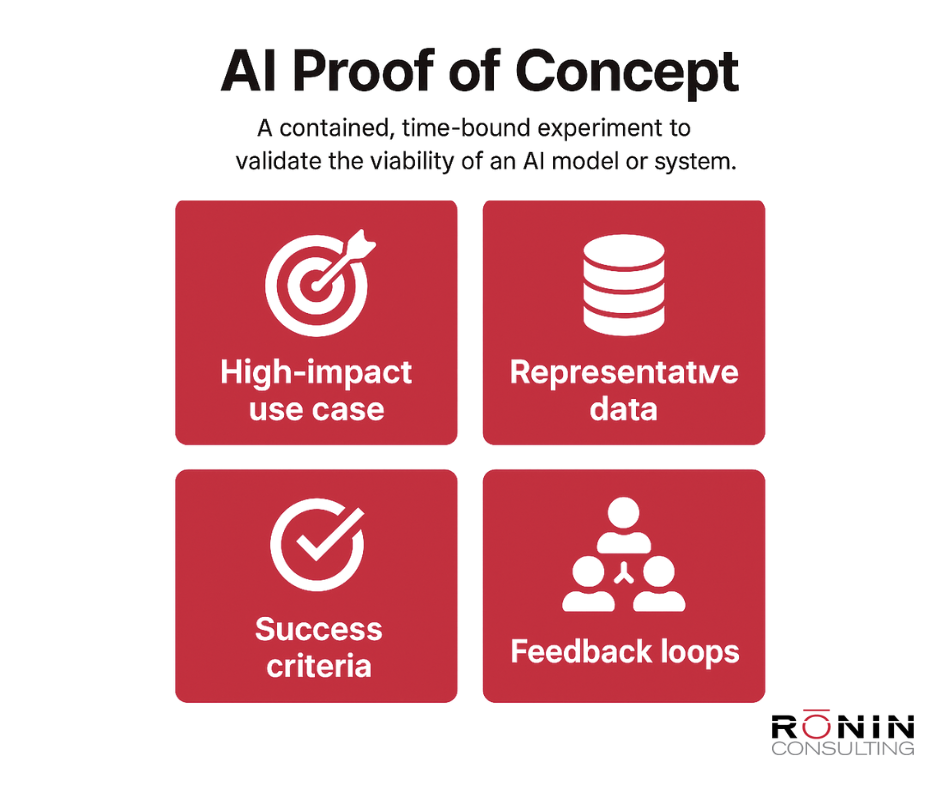
What Is an AI Proof of Concept?
An AI POC is a contained, time-bound project that demonstrates the viability of an AI model or system for solving a specific business problem. It’s not a prototype, and it’s not production. Think of it as a low-risk experiment to prove value before scaling.
A good POC:
- Targets a high-impact, clearly defined use case.
- Uses real or representative data.
- Has measurable success criteria.
- Includes feedback loops between developers, domain experts, and end users.
It gives stakeholders an opportunity to see AI in action and evaluate its ROI in a focused, structured way. They can observe how the system handles real-world inputs, assess whether the results align with business goals, and identify any operational or organizational hurdles early on.
Why you need a POC before committing to AI
Too many companies get sold on AI vision decks and grandiose promises. Then they spend six months building something that can’t go live, doesn’t deliver value, or collapses under compliance requirements. Why would you spend all of that time and money when you can build a POC that takes that pressure away? Building a POC early will help you avoid all of that by:
- Identifying technical constraints early. Find out fast whether your data is usable, whether integration is feasible, and whether the problem is a good fit for AI.
- Making smarter investment decisions. Get a performance snapshot that helps you decide if the full rollout is worth the cost.
- Rallying internal support. Demonstrate value in weeks (not months) to give internal champions the fuel they need to keep leadership aligned and engaged.
- De-risking the unknown. Uncover blind spots before they’re expensive—whether that’s related to security, performance, compliance, or infrastructure.
In short, a POC makes your AI journey strategic, not reactive.”
What a great AI POC looks like
Not all POCs are created equal. The ones that fail usually suffer from poor scope, bad data, or lack of alignment between business and tech teams. The ones that succeed tend to share some of these key traits:
- Narrow scope. One problem. One model. One business use case.
- Cross-functional ownership. Tech teams can build, but business units must help define success.
- Rapid timeline. 4-6 weeks max. Any longer and you’re building a product, not proving a concept.
- Success metrics. These need to be business-facing. Think: improved accuracy, reduced time-to-resolution, increased revenue per rep.
The goal of a POC isn’t to build something perfect—it’s to learn fast, reduce risk, and create a clear path to production with confidence and alignment. Get these elements right, and your POC becomes a launchpad, not a dead end.
Before you start? Prove it with a POC.
AI is not a magic fix-all.
It’s a strategic capability.
Like any strategy, it needs validation before scaling. A POC ensures you’re not just following the AI trend—you’re building a foundation for real, long-term impact.
If you’re considering an AI initiative, ask this first: “What would success look like at a small scale?” Want the answer to that question relatively quickly?
Start with a POC.
Define the outcome, measure the results, and learn from the process. If it works, you’ll have the evidence and momentum to move forward confidently. If it doesn’t, you’ll fail fast, adjust quickly, and avoid costly missteps.
To learn more about how you can get started with an AI POC, reach out to our team today.

